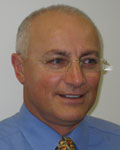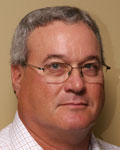The Halyard gas discovery: a case study
Carlo Bevilaqua A , Paul T. Bingaman A , Matthew S Dielesen A , Kerry A. Graham A and David C. Jennette AApache Energy 256 St Georges Terrace Perth WA 6000
The APPEA Journal 49(2) 592-592 https://doi.org/10.1071/AJ08065
Published: 2009
Abstract
The Halyard—1 exploration well discovered gas in a new and separate reservoir unit at the top of the Barrow Group along the outer margin of the Barrow Delta.
The well is located in WA—13—L, approximately 15 km northwest of the East Spar Field and 4 km east-northeast of the Spar—1 well. It was drilled in February 2008 and intersected 27.8 m of net gas pay in a Valanginian age Barrow Group reservoir interpreted to be a wave-dominated shoreface sandstone. The nearby Spar—1 well was drilled in 1976 and intersected 18.4 m of net gas pay in an older Barrow Group Sandstone within a distinctly separate, delta-front turbidite setting.
The Halyard and Spar fields are located within the overall confines of a structural closure at the Top Barrow Formation level. Earlier reservoir models dating back to the 1970s assumed connectivity between all permeable sandstones within the Top Barrow closure. Critical analysis and integration of all subsurface and engineering data sets inclusive of modular formation dynamics tester (MDT) pressures, condensate gas-ratios, production test data, post-drill amplitude variation with offset (AVO) modelling and seismic facies mapping, however, indicate these reservoirs are distinct and separate stratigraphic traps formed by successive, sequentially sealed depositional units within a larger delta slope edge sequence.
Collection of this data has yielded considerable insight into what historically have been viewed as simple traps. In our view and experience, the Barrow Group geology is much more complex with many traps typified by critical stratigraphic components in their trapping mechanism. The Halyard discovery is an example of the type of trap we expect to host much of the remaining reserve potential in the proximal Barrow Delta.
keywords: Barrow Group, Spar Field, Halyard Field

Carlo Bevilacqua graduated in 1979 from the West Australian Institute Of Technology with a BAS in physics. After two years of seismic acquisition and processing with Geophysical Services Inc in Perth he joined the Oil Company of Australia, Sydney. Carlo then joined LASMO Energy as a staff geophysicist in Brisbane, and relocated to London and Rome. In 1990 Carlo joined Enterprise Oil where he worked in several positions including chief geophysicist in Rome, team leader—Southern North Sea in London and international exploration coordinator in London. Carlo joined Apache in 1999 in Perth where he works as a senior geophysical advisor. Member: ASEG, SEG, EAGE, APPEA and PESA carlo.bevilacqua@apachecorp.com |

Paul Bingaman graduated with a BSc in geology from Texas A & I University in 1977 and a MSc in geology from Idaho State University in 1980. He has held various geological positions at Exxon Company USA, Southland Royalty Company, Ranken Energy Corporation, Bridge Oil Ltd, Parker & Parsley Australasia Ltd, and more recently Apache Energy Ltd. Member: AAPG, SPE and PESA. paul.bingaman@apachecorp.com |

Matthew Dielesen graduated from Curtin University of Technology in Perth, Australia, with a BSc in geophysics in 2005. He completed his Honours in geophysics in 2006 with his thesis focusing on AVO modelling in the Barrow Sub-Basin, NWS Australia. He then joined Apache Energy Australia where he has since worked mainly in the Barrow Sub-Basin as an exploration geophysicist. matthew.dielesen@apachecorp.com |

Kerry Graham graduated from the University of Calgary, Canada, with a BSc in chemical engineering in 1988. Following graduation, she worked for Gulf Canada Resources as a drilling engineer for eight years and as a Production engineer for four years, which was followed by two years with Conoco Phillips as an exploitation engineer. In 2002 she joined Apache Corporation and has held various positions at Apache including reservoir engineer for Western Canada, a corporate reservoir engineering role in Houston, Texas and her current assignment as reservoir engineer with Apache Energy Ltd. in Perth, Australia. kerry.graham@apachecorp.com |

Dave Jennette received a MSc in geology from the University of Cincinnati in 1986. Until 2000 he served as a research geoscientist with ExxonMobil Upstream Research Company leading their deepwater reservoirs research program. He then joined the Bureau of Economic Geology at the University of Texas at Austin as a project manager and research scientist where he headed several multi-company research consortia. In 2005 he joined Apache Corporation as the lead stratigrapher for the exploration and production technology group and then became corporate manager of geology. Currently he is a senior geological advisor with Apache Energy in Perth, Australia. He has published several papers on various clastic depositional systems from both outcrop and subsurface settings and authored several best papers (AAPG, SPWLA). In 2005 he was an AAPG distinguished lecturer. dave.jennette@apachecorp.com |


